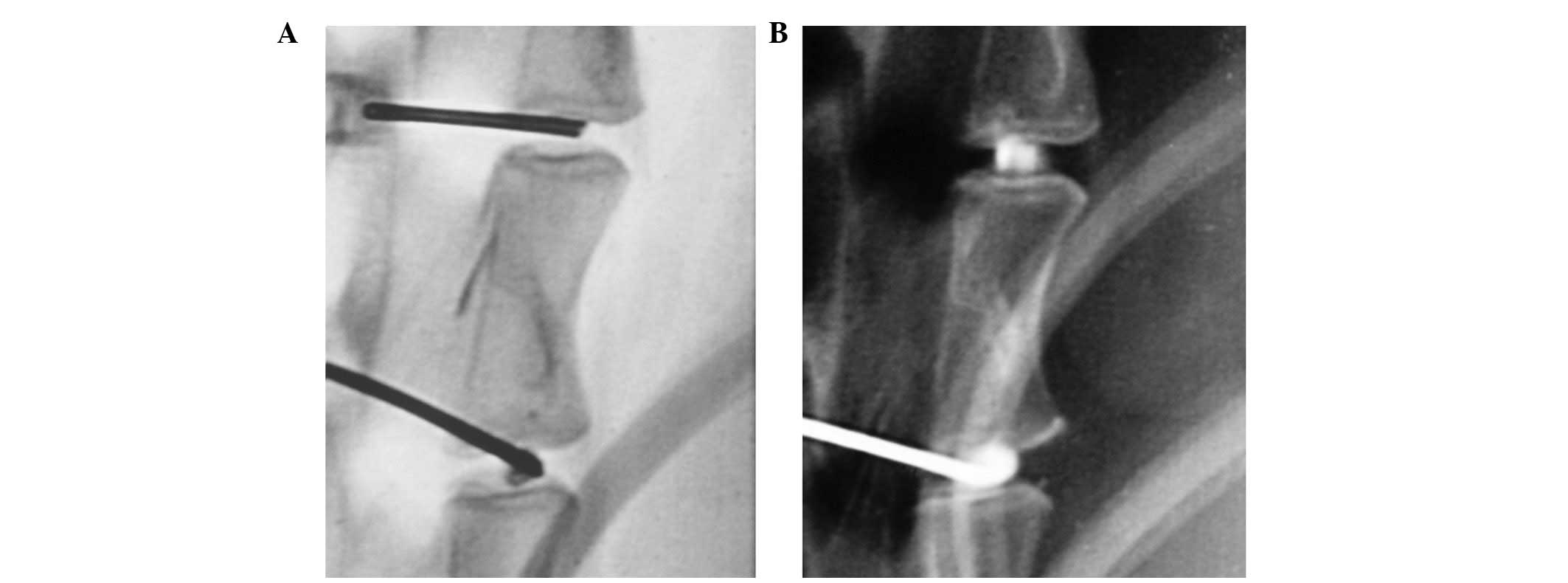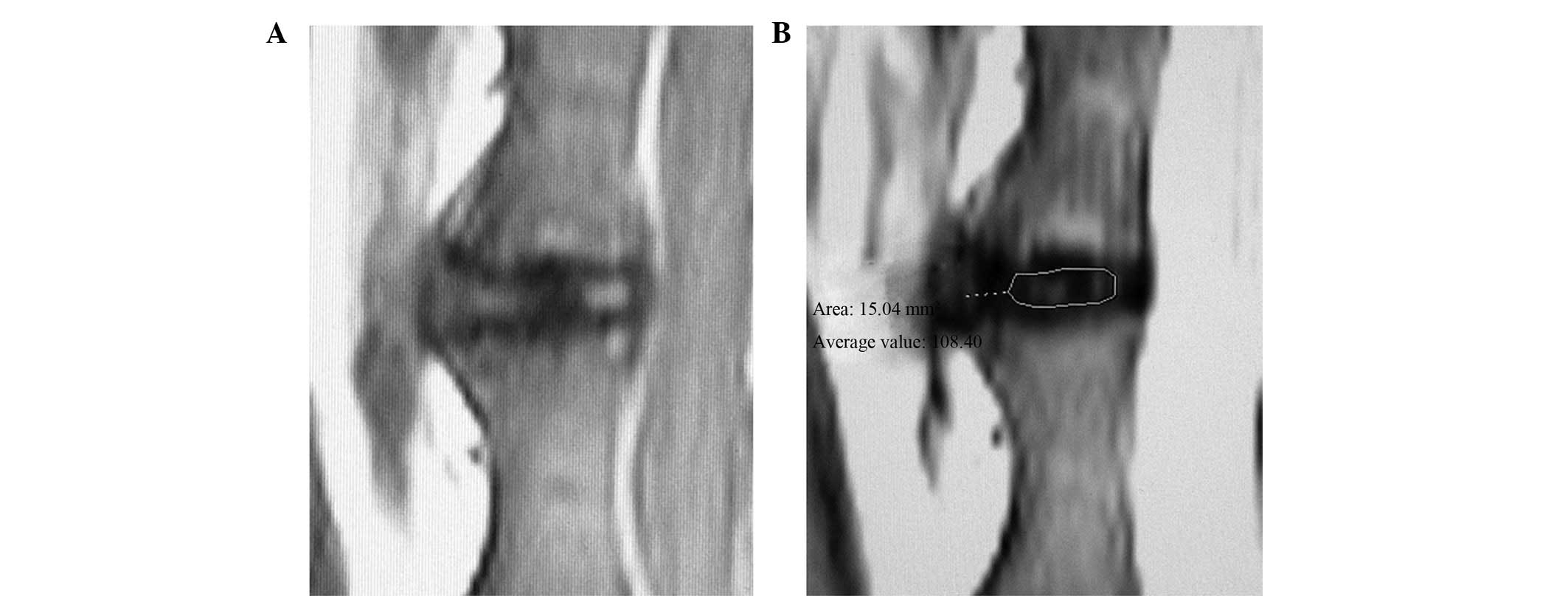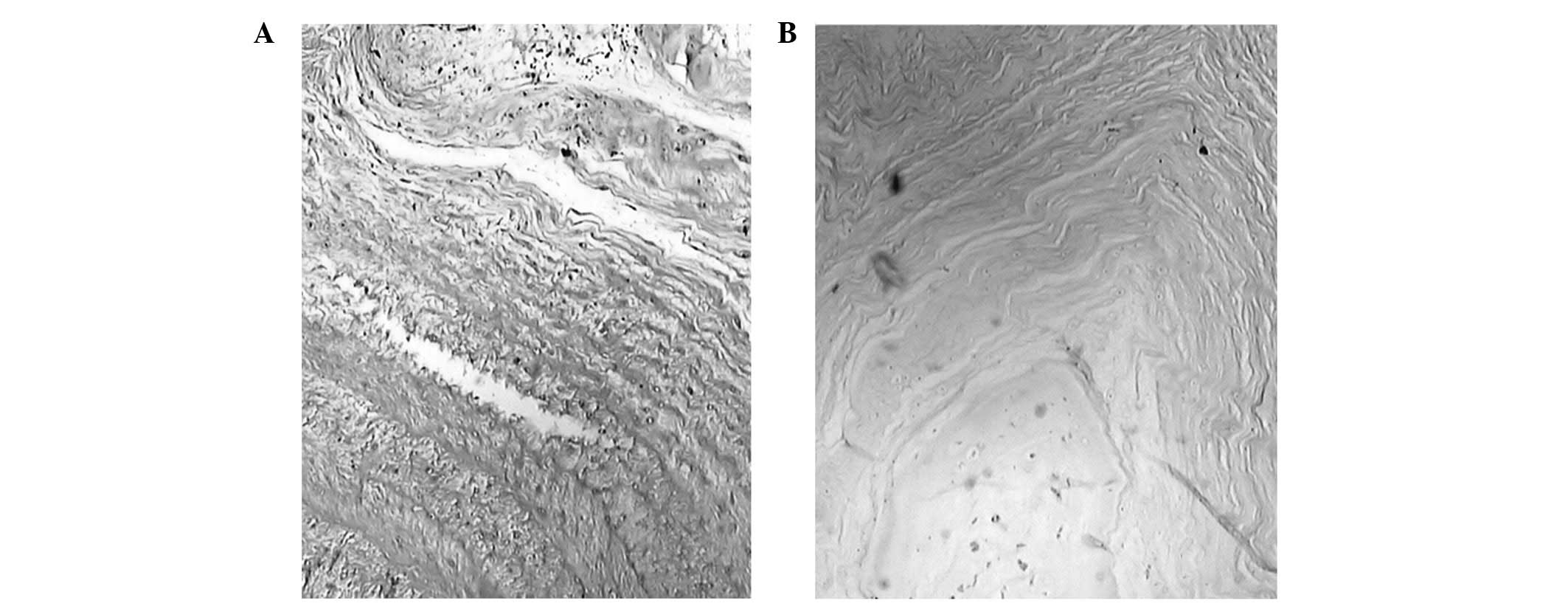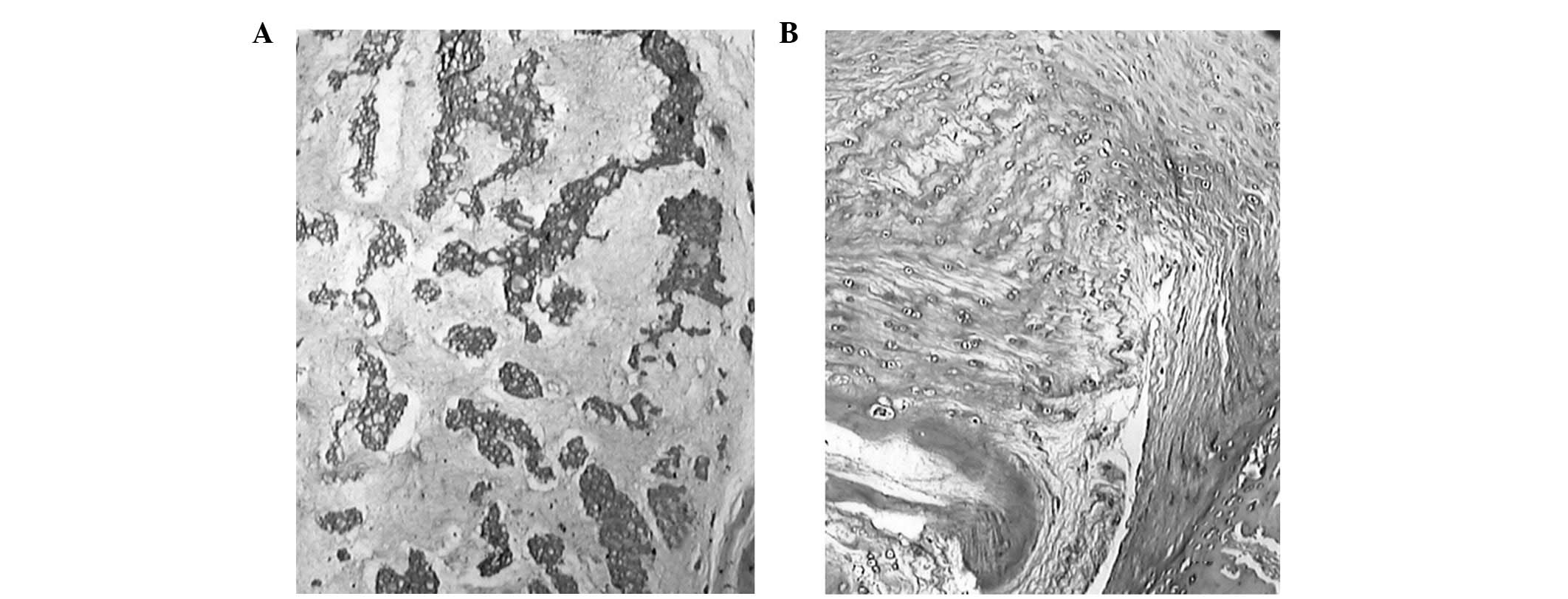|
1
|
Mirovsky Y, Anekstein Y, Shalmon E,
Blankstein A and Peer A: Intradiscal cement leak following
percutaneous vertebroplasty. Spine (Phila Pa 1976). 31:1120–1124.
2006. View Article : Google Scholar : PubMed/NCBI
|
|
2
|
Galibert P, Deramond H, Rosat P and Le
Gars D: Preliminary note on the treatment of vertebral angioma by
percutaneous acrylic vertebroplasty. Neurochirurgie. 33:166–168.
1987.(In French).
|
|
3
|
Cortet B, Cotten A, Boutry N, Flipo RM,
Duquesnoy B, Chastanet P and Delcambre B: Percutaneous
vertebroplasty in the treatment of osteoporotic vertebral
compression fractures: an open prospective study. J Rheumatol.
26:2222–2228. 1999.PubMed/NCBI
|
|
4
|
Jensen ME, Evans AJ, Mathis JM, Kallmes
DF, Cloft HJ and Dion JE: Percutaneous polymethylmethacrylate
vertebroplasty in the treatment of osteoporotic vertebral
compression fractures: technicalaspects. AJNR Am J Neuroradiol.
18:1897–1904. 1997.
|
|
5
|
Ahn Y, Lee JH, Lee HY, Lee SH and Keem SH:
Predictive factors for subsequent vertebral fracture after
percutaneous vertebroplasty. J Neurosurg Spine. 9:129–136. 2008.
View Article : Google Scholar : PubMed/NCBI
|
|
6
|
Chen JK, Lee HM, Shih JT and Hung ST:
Combined extraforaminal and intradiscal cement leakage following
percutaneous vertebroplasty. Spine (Phila Pa 1976). 32:E358–E362.
2007. View Article : Google Scholar : PubMed/NCBI
|
|
7
|
Pitton MB, Herber S, Bletz C, et al:
CT-guided vertebroplasty in osteoporotic vertebral fractures:
incidence of secondary fractures and impact of intradiscal cement
leakages during follow-up. Eur Radiol. 18:43–50. 2008. View Article : Google Scholar : PubMed/NCBI
|
|
8
|
Nieuwenhuijse MJ, Putter H, van Erkel AR
and Dijkstra PD: New vertebral fractures after percutaneous
vertebroplasty for painful osteoporotic vertebral compression
fractures: a clustered analysis and the relevance of intradiskal
cement leakage. Radiology. 266:862–870. 2013. View Article : Google Scholar
|
|
9
|
Nieuwenhuijse MJ, Van Erkel AR and
Dijkstra PD: Cement leakage in percutaneous vertebroplasty for
osteoporotic vertebral compression nfractures: identification of
risk factors. Spine J. 11:839–848. 2011. View Article : Google Scholar : PubMed/NCBI
|
|
10
|
Sobajima S, Kompel JF, Kim JS, et al: A
slowly progressive and reproducible animal model of intervertebral
disc degeneration characterized by MRI, X-ray, and histology. Spine
(Phila Pa 1976). 30:15–24. 2005.PubMed/NCBI
|
|
11
|
Brennan P and Silman A: Statistical
methods for assessing observer variability in clinical measures.
BMJ. 304:1491–1494. 1992. View Article : Google Scholar : PubMed/NCBI
|
|
12
|
Masuda K, Aota Y, Muehleman C, et al: A
novel rabbit model of mild, reproducible disc degeneration by an
anulus needle puncture: correlation between the degree of disc
injury and radiological and histological appearances of disc
degeneration. Spine (Phila Pa 1976). 30:5–14. 2005.
|
|
13
|
Provenzano MJ, Murphy KP and Riley LH III:
Bone cements: review of their physiochemical and biochemical
properties in percutaneous vertebroplasty. AJNR Am J Neuroradiol.
25:1286–1290. 2004.PubMed/NCBI
|
|
14
|
Dahl OE, Garvik LJ and Lyberg T: Toxic
effects of methymethacrylate monomer on leukocytes and endothelial
cells in vitro. Acta Orthop Scand. 65:147–153. 1994. View Article : Google Scholar : PubMed/NCBI
|
|
15
|
Belkoff SM and Molloy S: Temperature
measurement during polymerization of polymethylmethacrylate cement
used for vertebroplasty. Spine (Phila Pa 1976). 28:1555–1559. 2003.
View Article : Google Scholar
|
|
16
|
Aebli N, Goss BG, Thorpe P, Williams R and
Krebs J: In vivo temperature profile of intervertebral discs and
vertebral endplates during vertebroplasty: an experimental study in
sheep. Spine (Phila Pa 1976). 31:1674–1678. 2006. View Article : Google Scholar : PubMed/NCBI
|
|
17
|
Hutton WC, Elmer WA, Bryce LM, Kozlowska
EE, Boden SD and Kozlowski M: Do the intervertebral disc cells
respond to different levels of hydrostatic pressure? Clin Biomech
(Bristol, Avon). 16:728–734. 2001. View Article : Google Scholar : PubMed/NCBI
|
|
18
|
Rannou F, Lee TS, Zhou RH, et al:
Intervertebral disc degeneration: the role of the mitochondrial
pathway in annulus fibrosus cell apoptosis induced by overload. Am
J Pathol. 164:915–924. 2004. View Article : Google Scholar : PubMed/NCBI
|
|
19
|
Baroud G, Heini P, Nemes J, Bohner M,
Ferguson S and Steffen T: Biomechanical explanation of adjacent
fractures following vertebroplasty. Radiology. 229:606–608. 2003.
View Article : Google Scholar : PubMed/NCBI
|
|
20
|
Walker MH and Anderson DG: Molecular basis
of intervertebral disc degeneration. Spine J. 4:158S–166S. 2004.
View Article : Google Scholar : PubMed/NCBI
|
|
21
|
Peh WC, Gilula LA and Peck DD:
Percutaneous vertebroplasty for severe osteoporotic vertebral body
compression fractures. Radiology. 223:121–126. 2002. View Article : Google Scholar : PubMed/NCBI
|
|
22
|
An Hs, Takegami K, Kamada H, et al:
Intradiscal administration of osteogenic protein-1 increases
intervertebral disc height and proteoglycan content in the nucleus
pulposus in normal adolescent rabbits. Spine (Phila Pa 1976).
30:25–31. 2005.
|





















